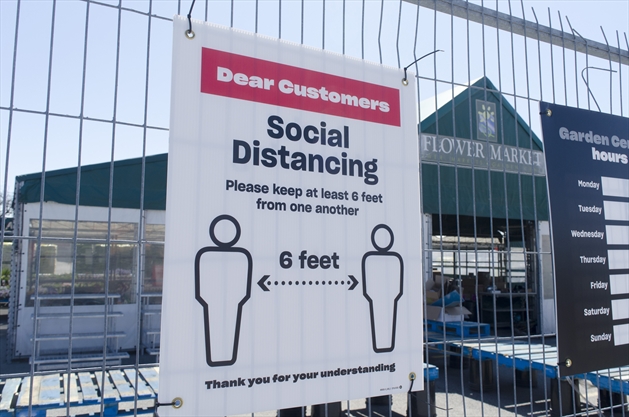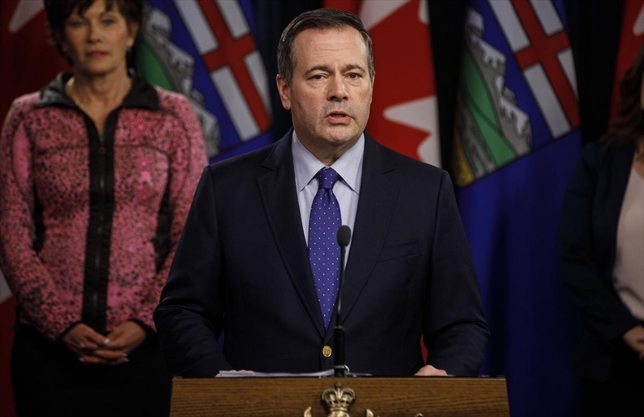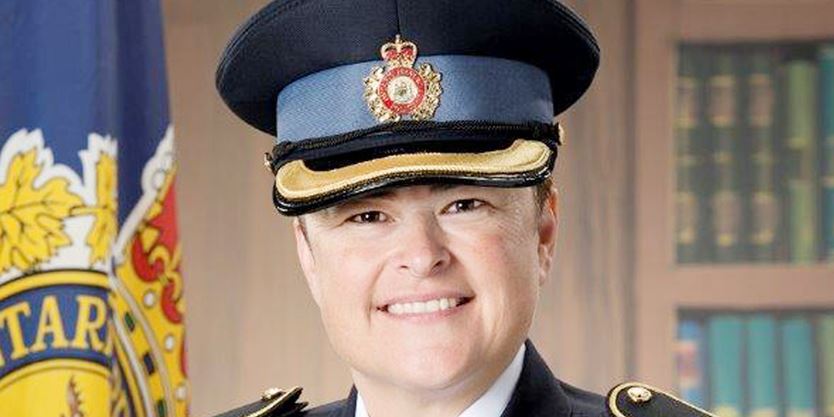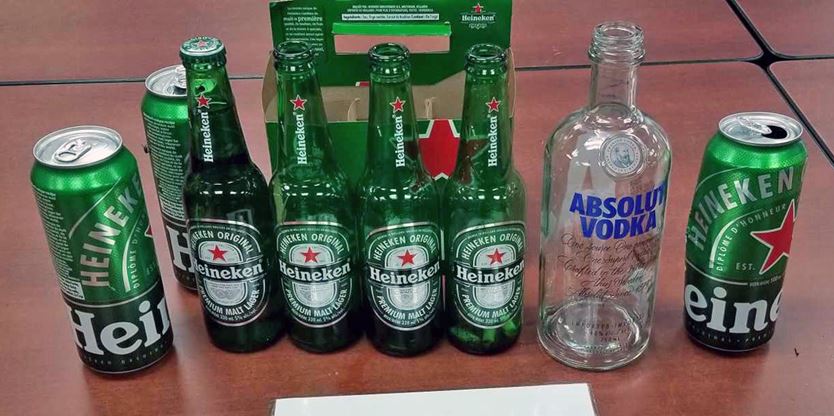The novel coronavirus has been around for less than a year and already the science is changing.
An early study in June found few or no antibodies in asymptomatic carriers only weeks after infection, suggesting a lack of immunity, but more recent studies have shown that people who have no or little symptoms can launch a robust T-cell immune defence.
And a recent study in Australia showed that in a darkened lab, the virus can live on surfaces such as cellphone screens for up to 28 days, weeks longer than earlier studies, albeit under different conditions.

As we move inside for a period that is once again new in our COVID-19 world — winter — we ask experts to update some of the emerging science that will undoubtedly have to be updated yet again in the coming months, and ask for some advice on how to stay safe indoors.
Our experts include Eunha Shim, an associate professor of mathematics at Soongsil University in South Korea; Jennifer Gommerman, professor of immunology at U of T and Canada Research Chair in tissue specific immunity; Gerardo Chowell, a mathematical epidemiologist at Georgia State University; and Dasantila Golemi-Kotra, a microbiologist and associate professor at York University.
Questions and answers have been edited for clarity and length.
Transmission outdoors
Outside in the summer, the virus was thought to be less transmissible because of UV rays, which make it unstable, as well as the vast amount of air, which dilutes the amount of virus. How will cold and dry weather in winter months outside affect transmission of the virus outdoors?
Unlike summer, when the virus is less stable in temperatures of 30 C or above, the virus remains stable when the temperature dips below zero. And in dry weather, the droplets that come out of a person’s nose and mouth lose moisture, which means they can become smaller in size (smaller than five microns) and aerosolized, hanging around in the air for longer periods of time. However, these two factors shouldn’t be an issue outdoors because of the vast amount of airflow (although one has to maintain physical distancing and opt for a face mask when this is not possible). Cold and dry become more significant factors indoors where there’s no air circulation. —DGK
Transmission indoors
How worried should we be about moving indoors?
We should be really worried. Even if you can maintain physical distance indoors, because it’s an enclosed space and you spend more time indoors with the people around you, the droplets are concentrating because the volume of this room doesn’t change but more and more the droplets are coming out of your mouth or somebody else’s mouth.
But, this is a point we need to highlight as we go indoors. I wouldn’t panic. We have tools we can use. And we can control our behaviour. —DGK
The frequency of infections indoors versus outdoors is overwhelming higher. I don’t think we have good data on that, but we know all the super-spreader events occur indoors — social gatherings, religious events — all of these things happen indoors so that’s very important. A rough estimate, back of the envelope, I would say 80 per cent of all of the infections are occurring indoors, whether that’s public transportation or enclosed spaces in the home or in the workplace or school or in the restaurants or bars, which clearly have played a very important role in transmission. It’s difficult to separate whether that’s droplets versus aerosol. —GC
Researchers in Japan recently modelled emissions using a supercomputer to show that aerosolized particles released from an infected person doubled in low humidity — 30 per cent — compared to 60 per cent. Should people invest in humidifiers to reduce the spread of aerosolized particles?
It’s kind of a double-edged sword. In humid environments, the droplets retain water and fall faster, which mean less aerosolized particles. But that also means that indoors, the particles may fall to the floor or on to surfaces, which could be an issue for transmission. However, more and more experts believe that surface transmission is not a major factor — possibly because we are washing our hands more and touching our face less.
So yes, I would advise using a humidifier, not only as a way to reduce aerosolized particles, but to decrease transmission of other illnesses such as the flu. Studies of influenza have shown that dry air damages the surface of the nasal cavity, allowing greater amounts of the virus to enter the body, a risk factor that can also impact the transmission of the novel coronavirus. —DGK
Should people use HEPA filters in their homes?
A dentist’s office — where people are coming in and going out and where you are sitting there with your mouth open and another person was there before you — they should use HEPA filters because there is a lot of droplets emitted when the mouth is open for half an hour or more at times.
So if you have an elderly person at home, or someone with a compromised immune system and you’re having visitors, it’s an extra measure to put a HEPA filter in the room to avoid these respiratory droplets from getting into the person.
But the best thing actually is — let’s keep the number of people that come in our house limited. And if transmission is a concern, wear a mask inside. Studies out of South Korea show that wearing a mask, even inside a home, prevented transmission of disease from family member to family member. —DGK
The importance of masks
What has research shown about the effectiveness of masks at preventing transmission of the virus?
Masks are important because they decrease the amount of respiratory droplets that move through the mask. You can spend an hour or so in that environment and you don’t run into the risk of increasing the number of droplets in the air because the mask is filtering them out.
Even non-medical masks, made of two layers of materials including cotton, flannel, even cotton-polyester, have been shown to reduce respiratory droplets by 80 per cent. That’s a big reduction. So you can stay indoors provided you use a face mask. You are decreasing the exposure of the other people to these droplets. If everybody is wearing a face mask inside the room and keeping physical distancing you are pretty much reducing transmission to very low levels, by as much as 90 per cent.
Not only do masks decrease exposure of other people to the wearer, they also protect the wearer. Studies have shown that with influenza, masks can filter about 30 per cent of the respiratory droplets that fall on the mask. It’s not much, and it’s not 100 per cent like an N95 respirator mask, but it becomes significant when considering the other mitigation measures (such as physical distancing).
What we are striving for is not eliminating our exposure to the virus, which would be ideal, but if possible at least reduce our exposure, because getting sick is not just about getting exposed but how much exposure you’re getting. And if you’re able to decrease the viral load to which you’re exposed to, then we can reduce the risk of getting sick. —DGK
How long can a mask keep you safe?
Studies have shown that in close contact between two people, the virus can easily reach the level of transmission within eight minutes. This was in laboratory studies, but this is sort of a benchmark for us. If you’re using a face mask, it’s reducing respiratory droplets by 80 per cent so one can do the math there. So one hour becomes bearable — affordable — you could spend one hour with someone close by providing both people are wearing face masks properly. But the goal should always be to keep it short because you don’t want to play with the numbers. It’s about exposure. Longer exposure, the more virus will be in the environment and the more you’ll get exposed to.
No one has studied the length of time a mask is good for, but if there is enough surface capacity in the mask to hold those respiratory droplets (provided one is not involved in strenuous activities such as singing, shouting, running), it could be effective for three or four hours at a stretch. —DGK
Surface transmission
A says the virus can survive on certain surfaces for up to 28 days, but the research was done in a lab in the dark and we know that UV light can destabilize the virus. Surface transmission has not appeared to be a big factor so far in COVID-19 transmission. Do you think the results of this study show we should continue to be vigilant when it comes to cleaning surfaces?
Although there is no ample evidence in the scientific literature that transmission of the virus via fomites (surfaces) is the main route, it remains a risk. This risk is derived from two factors: the stability of the virus on surfaces under the right (environmental) condition, as well as its access to the nose, mouth, and eyes, which leads to infection of these parts of the upper respiratory tract. So, under the right conditions and the wrong person (someone with underlying health conditions or compromised immune system), the risk of transmission of the novel coronavirus through contaminated surfaces remains. —DGK
Immunity
showed she had IgG antibodies to the virus, but the test results also stated that it didn’t mean she was immune to the virus. How could she have antibodies and not be immune? Do you need a certain amount of antibodies to be immune?
It doesn’t mean she’s not immune. It means we don’t know that she’s immune. And the reason we don’t know she’s immune is we don’t know the level of antibodies that are required to confer immunity. It’s hard to do those studies. We just don’t have that information yet.
And it’s not just the level. We would want to test her particular kind of antibodies, to see if they are neutralizing antibodies. Do the antibodies that you make block the virus from entering your human cells? Because some of them will stick to other parts of the virus and not necessarily block its entry. So just seeing the IgG antibodies is not enough. We have to known if they can actually neutralize the virus.
We know that in places that have very high rates of COVID-19, for example Qatar, that reinfection risk has been extremely low. So that implies that the antibody responses that we make to this virus, and the T-cell responses, because both are part of the equation, are enough to confer immunity. We just don’t have a number on that.
But I think because there have been 38 million infections and very few reports of reinfection, immunologists believe that the type of immune response that SARS CoV-2 elicits, even in asymptomatic people, is quite robust and should confer immunity.
I want to really caution here that we should not hold out for herd immunity, because not everybody makes an appropriate immune response. People die. And we don’t know how long that immune response lasts, because we’ve only been at this since March. —JG
Your study showed that convalescent patients, who recovered from the virus, had antibodies more than 100 days after symptom onset. Do we know how long the antibodies will last?
If you backed up from when we first posted our study, 115 days from then, you’re in March. So we just don’t have anything longer.
But there was a study that came out of China, and they had the earliest patients, and they showed that antibodies, the same ones — the IgGs —last for six months. So the six months data is as much as have right now across the world. — JG
A recent study from the Karolinska Institute in Sweden found that people with COVID-19 who were asymptomatic or had mild symptoms had a robust T-cell response to the virus. What does that mean?
Both T cells and antibodies will fight the virus. The study said that even if you’re asymptomatic, you’re going to make a T-cell response to the virus, which is great news. And that result is consistent with another paper by my colleague that is not yet peer reviewed. She also showed that asymptomatic or COVID-19 patients with mild illness make a good T-cell response, which like antibodies, may provide immunity to the virus. — JG
Vaccines
What is it about vaccines that so far show they will work?
Data that’s been generated in primates demonstrates that some vaccines are capable of eliciting an effective immune response that prevents reinfection. That is, when the immunized animals were challenged with the virus, they don’t get sick. That’s good — and suggests the vaccine may also work in us. And then there are also these phase two trials that have shown that people that were given the vaccine could make good immune responses based on analysis of the vaccinated persons blood.
It’s not until we do a phase three trial that we get a full sense of the safety and efficacy of the vaccine that we can make any conclusions, but so far there have been some candidates that look promising. —JG
Mortality
An early study of more than 40,000 confirmed cases of the virus by the China Centre for Disease Control and Prevention Institutional Review Board found that the case fatality rates was around 2.2 per cent. What do we know about case fatality rates now and how Canada compares?
In Canada, based on the confirmed cases until April 22, 2020, the case fatality rate was estimated to be 4.9 per cent. On the other hand, in Italy, where 12 per cent of all detected COVID-19 cases and 16 per cent of all hospitalized patients were admitted to the intensive care unit, the estimated case fatality rate was 7.2 per cent in mid-March. Other studies in China, including a joint World Health Organization-China fact-finding mission, have said the case fatality rate ranged from 5.8 per cent in Wuhan to 0.7 per cent in the rest of the country. —ES
Proportion of asymptomatic cases
An early study linked to an outbreak on a cruise ship off Japan estimated that about 18 per cent of people were asymptomatic. Is that the proportion in the general population or has research shown the number to be much higher?
In a more recent Italian study, it was estimated that the proportion of asymptomatic infection is 42.5 per cent, based on data from two large cohorts that identified cases through population-based testing. Also, in a smaller COVID-19 outbreak within a skilled nursing facility in Washington state, U.S, 27 of the 48 residents (56 per cent) who had a positive screening test were asymptomatic at the time of diagnosis, but 24 of them ultimately developed symptoms over the next seven days.
Nevertheless, for more accurate estimation of asymptomatic proportion, we will need longitudinal followup to assess for symptom development, which has not yet been performed. Additionally, the definition of “asymptomatic” may vary across studies. —ES
COVID-19 in children
Has there been new research into transmission of the virus in children?
A more recent finding is that kids younger than 10 are not as affected by COVID-19 as older individuals. So they are apparently less susceptible or they are able to mount an innate immune response that is able to quickly fend off the virus. They also seem to be less transmissible. They are not as effective spreaders as older kids.
We don’t really know why. It could be they’re getting the coronavirus and have a very mild infection or may even be asymptomatic, and their innate immune system is able to quickly clear them.
But we don’t have good data on the proportion of children that are asymptomatic because schools are not at 100 per cent capacity and fortunately a number of social distancing measures have been put in place, so we don’t have enough information to know if they are more asymptomatic or less asymptomatic than older people.
There’s still needs to be much more data to quantify the relative susceptibility and infectiousness of young kids, particularly those younger than 10 years in the transmission dynamics. —GC
Airborne transmission
Is there new evidence on aerosol transmission?
It has becoming increasingly clear that transmission of the virus in enclosed spaces is very important, particularly in spaces not well ventilated which increases the concentration of the virus and the likelihood that individuals will inhale the virus and get exposed to it. That’s very well established.
Some political agencies like the Centers for Disease Control and Prevention have been hesitating on whether they want to make this statement very strong and clear or not. But politics is interfering. — GC
(The CDC posted a warning about aerosols but on Sept. 21, replaced it with previous information that warned only about droplets and advised people to stay six feet apart. On Oct. 5, it updated its website to say that “COVID-19 can sometimes be spread by airborne transmission.”)



















